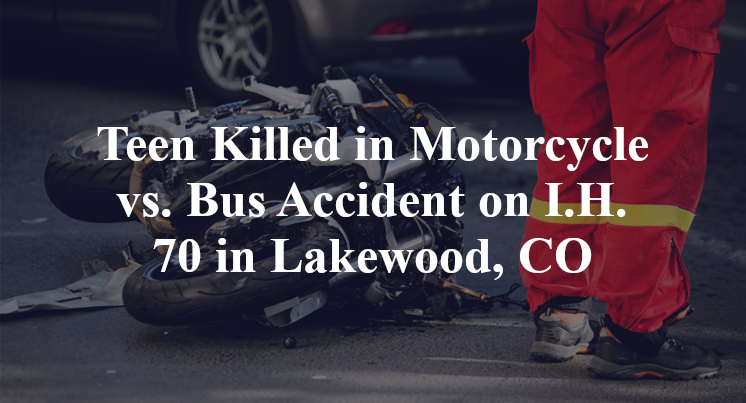Teen Killed in Motorcycle vs. Bus Accident on I.H. 70 in Lakewood, CO
Lakewood, CO — July 15, 2025, a teenager was killed due to a motorcycle versus bus accident sometime in the evening along Interstate Highway 70.
According to authorities, the accident took place on I.H. 70 in the vicinity of Colorado Mills Boulevard.

Details surrounding the accident remain scarce. Officials indicate that, for as yet unknown reasons, a collision took place involving a motorcycle, a bus, and a possible third vehicle that allegedly left the scene. A 19-year-old man reportedly sustained fatal injuries due to the wreck and was there declared deceased. Additional information pertaining to this incident—including the identity of the victim—is not available at this point in time. The investigation is currently ongoing.
Commentary
When a young motorcyclist is killed in a collision involving a bus—and possibly a third vehicle that fled the scene—the first question is who triggered the sequence of events, and did anyone have a chance to prevent it from escalating? Fatal wrecks involving motorcycles and large commercial vehicles are already complex, but when a potential hit-and-run is added to the mix, it becomes even more important to sort out the timeline clearly and accurately.
The presence of a third vehicle that allegedly left the scene raises serious concerns. If that vehicle caused the motorcyclist to lose control or veer into the path of the bus—even without direct contact—it could still bear legal responsibility. In prior cases I’ve worked, we’ve seen “phantom vehicles” force motorcyclists out of their lane, clip their rear wheel, or cause rapid lane changes that result in deadly consequences. Fleeing the scene only compounds the issue, turning a possible mistake into a crime.
From the bus operator’s side, there are still key questions to answer: Did the driver see the motorcyclist? Was the bus attempting a lane change or merge? How quickly did the events unfold, and was there any opportunity to avoid impact? Investigators should be reviewing dash cam footage, driver statements, and black box data to determine how and when the bus became involved.
Motorcycles are highly vulnerable in traffic, especially on major highways like I-70. A small shift by another vehicle can create an unavoidable situation for the rider. But even in crowded conditions, commercial drivers are expected to maintain high situational awareness—and to anticipate the presence of smaller vehicles in adjacent lanes or blind spots.
Ultimately, the investigation will need to determine who initiated the sequence, whether the bus driver’s actions were appropriate, and what role—if any—the third vehicle played before leaving the scene.
Key Takeaways
- A third vehicle may have contributed to the crash and then fled, raising the possibility of hit-and-run liability even without direct impact.
- Investigators must determine whether the motorcyclist was forced into the bus’s path or if the bus contributed to the collision by failing to yield or see the rider.
- Dash cam footage, vehicle data, and witness accounts will be critical in reconstructing the chain of events.
- Commercial drivers are held to high standards of awareness and control, especially in multi-vehicle environments.
- Accountability may not rest with just one party; this case may involve shared fault depending on how each driver responded in real time.

“These are essential reads for anyone dealing with the aftermath of a truck wreck”– Attorney Cory Carlson